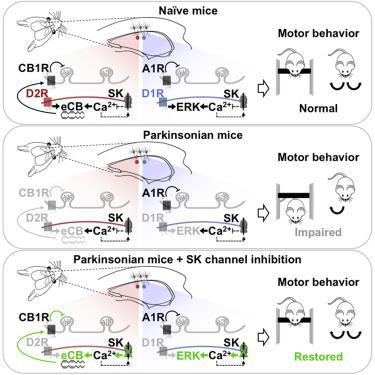
Coordinated Regulation of Synaptic Plasticity at Striatopallidal and Striatonigral Neurons Orchestrates Motor Control
All procedures involving animals were carried out in accordance with the Italian Ministry of Health’s directives (D.lgs 26/2014) regulating animal research. Mice were injected with 6-OHDA HBr (3.5 μg/μl) into the right medial forebrain bundle (MFB). Severity of dopamine denervation was estimated 9–14 days later by computing the number of ipsilateral over total spontaneous rotations of the body in 6-OHDA- and sham-lesioned mice. Only mice displaying a ratio of ipsilateral/total tight rotations >9




